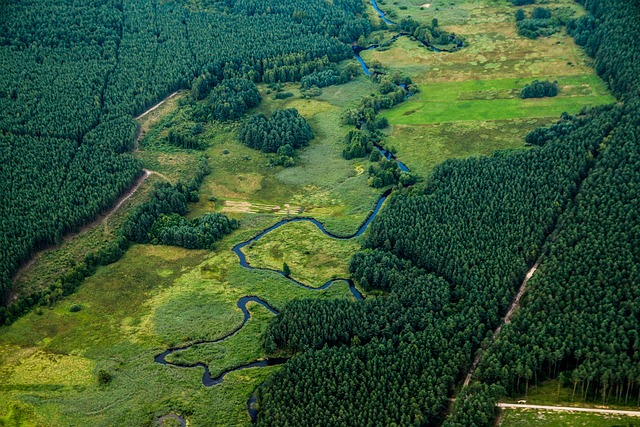A Guide to Mastering Aerial Photo Composition in Photography
The world looks entirely different from above, and capturing it through an aerial photo allows photographers to convey narratives that ground-level photography often misses. The composition is crucial in these shots, as it can transform a simple snapshot into a breathtaking visual experience. In this guide, we will explore key aspects of composing stunning aerial photographs that resonate with viewers.
Understanding the Scene
When planning your aerial shots, it’s vital to grasp the geography and architecture of the landscape below. A successful aerial photo tells a story and evokes feelings that connect viewers with the subject matter. Spend time scouting your location using maps and researching what elements can add interest to your composition.
Utilizing Natural Lines
One effective technique in photography is the use of natural lines—these can be roads, rivers, or patterns formed by fields or urban layouts. When observed from above, these lines naturally guide the viewer’s eye through the image. Ensuring that these elements lead towards your point of interest is crucial for creating dynamic compositions that hold attention.
Layering Elements
Aerial photography uniquely allows for layering elements within the frame, which can create a sense of depth and context. Consider how camera angles and heights can influence the layers present in your shots. For instance, capturing a bird’s-eye view of a busy city street juxtaposed with an expansive park can invoke a powerful contrast that tells a compelling story about urban life versus nature.
Golden Hour Magic
Lighting can profoundly affect the quality and mood of an aerial photo. The golden hour—during sunrise or sunset—offers soft light that can add warmth and interest to the scene. The shadows created during this time not only enhance textures but also help in defining shapes and forms, making the composition all the more engaging.
Experimenting with Framing
Framing is an essential aspect of composition and can dramatically affect how an image is perceived. Experiment with different optics and focal lengths to capture various perspectives. Wide-angle lenses can include a broader scene, immersing the viewer in the environment, while telephoto lenses can help isolate subjects, focusing attention on key elements of the landscape.
Balancing Elements
When composing your aerial photo, strive for balance within the frame. This doesn’t mean achieving symmetry but rather ensuring that no single element overpowers the others. Use negative space effectively to create a sense of harmony and draw attention to your focal point, allowing breathing room that enhances the overall aesthetic.
Post-Processing Techniques
Once you’ve captured your aerial shots, the work isn’t over. Post-processing plays a crucial role in refining the composition. Adjusting contrast, saturation, and sharpness can bring out details that were previously subdued. However, always aim to maintain the authenticity of the scene while enhancing its beauty, ensuring the end result remains a true reflection of your vision.
Mastering aerial photo composition intertwines technical skill, artistic vision, and an understanding of the environment. With practice and a keen eye, photographers can elevate their aerial imagery, crafting photographs that not only stand out but also resonate deeply with viewers.



